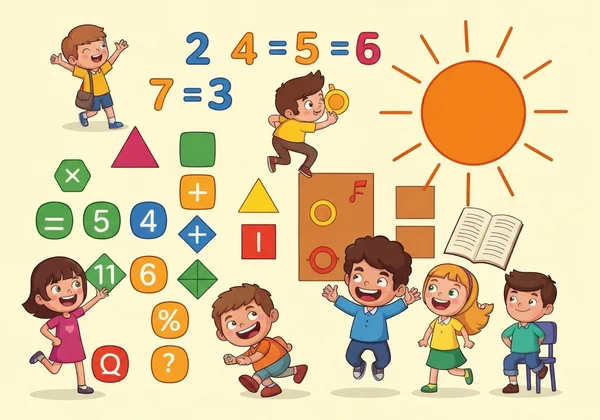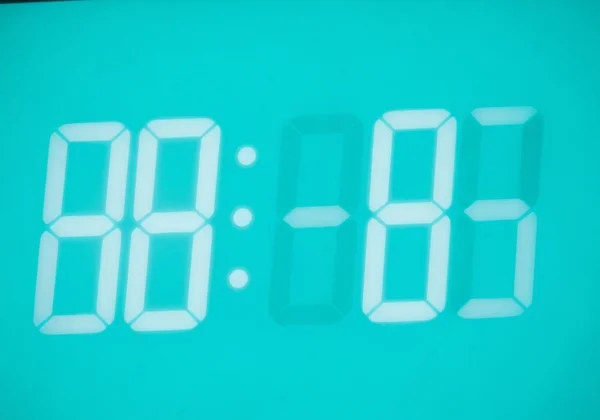7 Fun Multiplication Chart Games for Mastering Times Tables
Let's be honest: the thought of memorizing times tables can make even the most enthusiastic learner groan. Endless drills and flashcards often turn multiplication practice into a chore. But what if there was a way to ditch the boring drills and transform learning into an exciting adventure? How can I help my child learn multiplication without the nightly struggle? The answer lies in turning practice into play, and the perfect playground is a multiplication chart.
At our free multiplication chart platform, we believe learning should be engaging, visual, and, most importantly, fun. Our free, interactive tool is designed to do just that. It's more than just a grid of numbers; it's a dynamic canvas for discovery and games. Forget rote memorization—it's time to unlock the power of play. Ready to get started? You can explore our chart anytime.

Why Gamify Your Multiplication Practice for Kids?
Turning learning into a game isn't just about adding fun; it's a powerful educational strategy rooted in psychology. Gamification uses game-like elements—challenges, points, and friendly competition—to boost motivation and make complex topics more approachable. When kids are playing, they're not just memorizing; they're problem-solving, strategizing, and building a deeper, more intuitive understanding of math.
Boost Engagement with Interactive Math Games
Static, black-and-white charts can be intimidating. An interactive multiplication table, however, invites curiosity. When a child can click, highlight, and see immediate feedback, their brain lights up. This active participation keeps them focused longer, strengthens memory recall, and builds a positive association with math. The instant gratification of solving a puzzle or winning a challenge provides the encouragement they need to keep going.

Turn Chores into Cheers: The Power of Playful Learning
Think about the difference between being told to "do your homework" and being asked "want to play a game?" Playful learning frames education as an opportunity, not an obligation. It reduces anxiety and pressure, creating a relaxed environment where kids are more willing to take risks and learn from mistakes. By transforming multiplication practice into a series of fun challenges, you empower your child to take ownership of their learning journey, turning potential frustration into a sense of achievement.
7 Exciting Challenges Using Your Interactive Multiplication Chart
Ready to transform your math sessions? Here are seven exciting games you can play right now using the free interactive tool on our homepage. Each game is designed to target different skills, from pattern recognition to speed and accuracy.
Challenge 1: The 'Pattern Hunter' Game
This game is perfect for visual learners. The goal is to hunt for hidden patterns within the multiplication grid.
-
How to Play: Ask your child to find and highlight all the even numbers, odd numbers, or multiples of 5. Use the color palette on our interactive chart to mark them. Can they find the perfect squares that form a diagonal line?
-
Learning Goal: This challenge builds pattern recognition, a crucial skill in mathematics. It helps children understand that multiplication isn't random but is built on logical, predictable sequences.

Challenge 2: 'Race the Clock' Speed Drill Challenge
Add a dose of friendly competition with a timed challenge. This game is fantastic for improving recall speed once a child has a foundational understanding.
- How to Play: Set a timer for 60 seconds. Call out multiplication problems (e.g., "7 times 8!"). The player must find the answer on the chart as quickly as possible. Keep track of how many they get right before the timer runs out. Try to beat the high score next time!
- Learning Goal: This game sharpens quick recall and builds confidence in answering math facts under pressure, which is great practice for classroom tests.
Challenge 3: 'Color Code Breaker' Mystery
Leverage our chart's unique color feature to create a mystery! This game encourages strategic thinking.
- How to Play: As the "game master," secretly choose a simple shape or letter to "draw" on the chart by coloring in specific squares (e.g., a 3x3 square). Give your child the multiplication problems that correspond to those squares (e.g., 2x2, 2x3, 2x4, etc.). As they solve each problem and color the answer, the hidden shape is revealed.
- Learning Goal: This game reinforces multiplication facts while adding an element of surprise and creativity. The color code mechanic makes practice feel like solving a secret message.
Challenge 4: 'Missing Number' Detective
This game flips the script and encourages kids to think backward, laying the groundwork for understanding division.
- How to Play: Give your child an equation with a missing part, like "4 x ? = 24." They must use the multiplication chart to play detective, looking at the row for 4 and finding 24 to see which column it's in.
- Learning Goal: This puzzle-like activity strengthens problem-solving skills and introduces the concept of inverse operations. Finding the missing number makes them think more critically about how numbers relate.
Challenge 5: 'Roll the Dice' Multiplication Grid Game
Bring a physical element into the digital world with a pair of dice. If you don't have dice, two sets of small numbered cards (1-10) will work perfectly.
- How to Play: The player rolls two dice. The numbers that come up are the factors they need to multiply (e.g., a 4 and a 6 means they must solve 4x6). They then find the answer on the multiplication grid. For a two-player game, each player can use a different color to mark their answers, trying to get four in a row.
- Learning Goal: This game introduces an element of chance and fun, making practice unpredictable. It's a low-pressure way to practice a wide range of multiplication facts.
Challenge 6: 'Fact Family' Explorer
This challenge helps children see the bigger picture by understanding how multiplication and division are connected.
- How to Play: Pick an answer on the chart, for example, 30. Ask your child to find all the multiplication problems that result in 30 (e.g., 3x10, 10x3, 5x6, 6x5). Then, challenge them to write the two related division facts (30 ÷ 3 = 10, 30 ÷ 10 = 3).
- Learning Goal: Exploring fact families deepens mathematical understanding beyond simple memorization. It shows that numbers are interconnected and builds a solid foundation for more advanced math concepts.
Challenge 7: 'Quick Draw' Multiplication Duel
This is a fast-paced game perfect for two players—a child and a parent, or two siblings.
- How to Play: Two players stand back-to-back. A third person (or one of the players) calls out a multiplication problem, like "9 times 5!" The players turn around, race to the interactive chart, and the first one to point to the correct answer (45) wins the round.
- Learning Goal: This game is all about speed and accuracy. The friendly competition is highly motivating and helps solidify multiplication facts in long-term memory. It's one of the best fun multiplication games for energetic learners.
Pro Tips for Parents: Maximizing Fun Multiplication Practice at Home
Creating a positive learning environment is just as important as the games themselves. As a parent, your encouragement and approach can make all the difference. Here are a few tips to ensure your multiplication game sessions are successful.
Keep It Positive and Low-Pressure for Better Results
The goal is to build confidence, not create anxiety. If your child gets an answer wrong, treat it as a learning opportunity, not a failure. Use encouraging phrases like, "That was a good guess, let's find the answer together on the chart!" or "I see why you thought that! Let's look at the pattern." A positive learning atmosphere makes children feel safe to try, which is essential for growth.

Celebrate Progress: Small Victories Lead to Big Wins
Don't wait until the entire multiplication chart is memorized to celebrate. Acknowledge the small wins along the way. Did they beat their 'Race the Clock' score? Did they finally master the tricky 7s table? Celebrate with a high-five, verbal praise, or a small reward. Motivating learners is about recognizing effort and progress, which builds the momentum needed to tackle bigger challenges.
Level Up Your Math Skills: Start Playing with MultiplicationChart.cc Today!
Mastering multiplication doesn't have to be a daunting task. By transforming practice into play, you can unlock your child's natural curiosity and turn them into a confident, capable math enthusiast. The seven games above are just the beginning—the possibilities are endless with a versatile tool like our interactive multiplication table.
Now it's your turn to make math fun. Head over to MultiplicationChart.cc to access our free, easy-to-use chart. Explore the patterns, try out a game, and watch as your child begins to see multiplication in a whole new light.
Your Questions About Fun Multiplication Games Answered
Are there really fun games for practicing times tables online?
Absolutely! Online tools have revolutionized math practice. Instead of static drills, interactive platforms like our online multiplication tools allow for dynamic games like 'Pattern Hunter' and 'Color Code Breaker.' Our platform provides free, accessible, and genuinely fun multiplication games that keep kids engaged while they learn.
How can parents use games to help children learn multiplication effectively?
Parents can act as co-players and facilitators. Start by choosing low-pressure games to build confidence. Focus on the process of discovery rather than just getting the right answer. Use our interactive chart together to explore patterns and celebrate small victories. Consistency is key, so aim for short, frequent game sessions to keep learning fresh and exciting.
Why is it important to make learning multiplication fun and engaging?
Fun leads to better retention and a positive attitude towards math. When learning is engaging, the brain forms stronger neural connections, making it easier to recall information. More importantly, a positive experience prevents math anxiety and encourages a lifelong love of learning, which is far more valuable than memorizing a few facts.
What are the easiest ways to integrate games into a child's multiplication learning routine?
Start small and be consistent. Dedicate just 10-15 minutes a day to a "math game." You can link it to homework time as a fun warm-up or a rewarding cool-down. Use tools you already have, like dice or a deck of cards, in combination with our online multiplication tools to add variety. The key is to make it a regular, enjoyable part of their day.